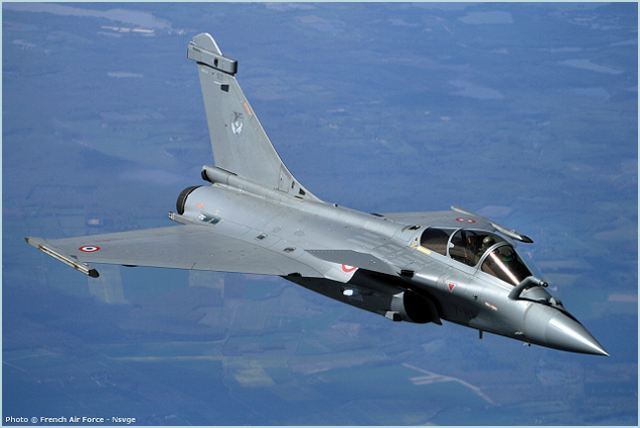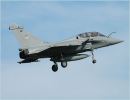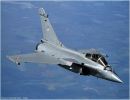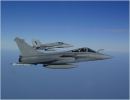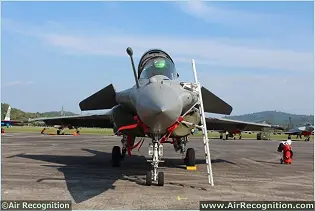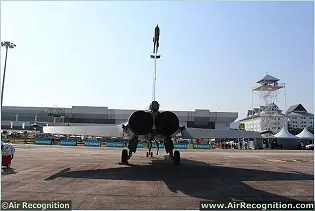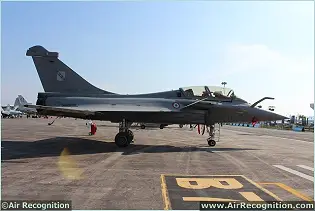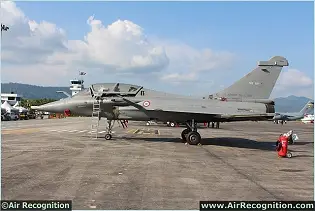|
|
||||||||||||||||||||||
| a | ||||||||||||||||||||||
|
Dassault Rafale fighter aircraft
|
||||||||||||||||||||||
|
|
||||||||||||||||||||||
|
|
||||||||||||||||||||||
|
|
||||||||||||||||||||||
|
The Dassault Rafale is a French made twin-engine delta-wing multi-role jet fighter aircraft designed and built by Dassault Aviation. Introduced in 2000, the Rafale is being produced both for land-based use with the French Air Force and for carrier-based operations with the French Navy. It has also been marketed for export to several countries but has not yet received orders. The RAFALE has exhibited a remarkable rate of survivability during the latest main French Air Force and Navy operations thanks to an optimized airframe and a wide range of smart and discrete sensors. It is slated to be the French armed forces' combat aircraft until 2040, at least. Production of the first aircraft formally started in December 1992, but was suspended in November 1995 due to political and economic uncertainty. Production only resumed in January 1997 after the Ministry of Defense and Dassault agreed on 48-aircraft (28 firm and 20 options) production run with delivery between 2002 and 2007.It was not until 1999 that a production Rafale M flew.Today, 120 Rafales have been officially ordered. Since 2006, the French Air Force and Navy RAFALE fighters have been engaged in countless combat missions in Afghanistan where they have demonstrated a very high availability rate. In the theatre, they have fired their weapons (250 kg laser-guided bombs and 30 mm guns) on numerous occasions. In early 2008, the AASM precision-guided, modular, air-to-surface armament was successfully utilised for the first time, scoring direct hits with remarkable precision. |
||||||||||||||||||||||
| Variants | ||||||||||||||||||||||
|
|
||||||||||||||||||||||
|
||||||||||||||||||||||
|
|
||||||||||||||||||||||
|
||||||||||||||||||||||
|
|
||||||||||||||||||||||
|
||||||||||||||||||||||
| Technical Data | ||||||||||||||||||||||
| Design | ||||||||||||||||||||||
|
The RAFALE features a delta wing with close-coupled canards. In-house research in computational fluid dynamics has shown the specific benefits of close coupling between the wings and the canards: it ensures a wide range of centre of gravity positions for all flight conditions as well as benign handling throughout the whole flight envelope. The choice of the close-coupled canards / delta wing configuration was decisive to ensure that the new fighter would offer the highest levels of performance during air-combats: even at high angles of attack, the RAFALE remains superbly agile, and its operational range for strikes at very long distances with incredibly heavy weapon loads is unmatched for such a compact design. Every effort has been made for the sake of tactical flexibility to obtain balanced performance between subsonic and supersonic regimes, either in heavy or lighter air-to-air configurations.
|
||||||||||||||||||||||
| Avionic | ||||||||||||||||||||||
|
Built as an air supremacy fighter, the Rafale features an advanced avionics suite designed to provide its pilots with excellent situational awareness. It sports an integrated electronic survival system named "SPECTRA", which embodies a software-based virtual stealth technology. The SPECTRA electronic warfare system provides the aircraft with the protects the aircraft against airborne and ground threats.The real-time data link allows communication with other aircraft and fixed and mobile command and control centres. The Rafale will also eventually use the Damoclès electro-optical/laser designation pod that brings full day and night LGB capability, though the Armée de l'Air's current plans call for Rafale to use stand off weapons, and for the LGB role to be handled by Dassault Mirage 2000s.The most important sensor is the Thales RBE2 passive electronically scanned multi-mode radar. Thales claims to have achieved unprecedented levels of situational awareness through the earlier detection and tracking of multiple air targets for close combat and long-range interception, as well as real time generation of three-dimensional maps for terrain-following and the real time generation of high resolution ground maps for navigation and targeting. SPECTRA's capabilities were trusted to the extent that French pilots began operations against Libya without the need for SEAD support aircraft or cruise missile bombardment.
In circumstances when signature management is required, the Rafale can use several passive sensor systems. The front-sector electro-optical system or Optronique Secteur Frontal (OSF), developed by Thales, is completely integrated within the aircraft and can operate both in the visible and infrared wavelengths. The Rafale core systems employ an Integrated Modular Avionics (IMA), called MDPU (Modular Data Processing Unit). This architecture hosts all the core functions of the aircraft as Flight management system, Data Fusion, Fire Control, Man-Machine Interface, etc. The total value of the radar, electronic communications and self-protection equipment is about 30% of the cost of the entire aircraft. The Rafale's ground attack capability is limited by the lack of an advanced targeting pod, but this will be rectified with the addition of Thales Optronique's Reco NG/Areos reconnaissance and Damocles targeting pods on the F-3 standard. The new Thales RBE2 AA Active Electronically Scanned Array (AESA) radar is planned to replace the existing passively scanned array of the RBE2. Thales will begin deliveries of the new radar in August 2010 for use on the fourth tranche of Rafale aircraft. A total of 60 tranche four aircraft have been ordered to date. The first AESA-equipped squadron of aircraft is expected to become operational in 2012. Thales also claims that the AESA radar will improve the operational capabilities of the aircraft in terms of range, interception, tracking ability and countermeasures. Rafale's attempts at export sales have been hindered by a lack of AESA capability, "a baseline requirement for a 21st-century aircraft. |
||||||||||||||||||||||
| Propulsion | ||||||||||||||||||||||
|
Rafale fighter aircraft is motorized with The M88-2 turbofan, a new-generation engine featuring state-of-the-art technologies, including non-polluting combustion chamber, single-crystal turbine blades and powder metallurgy disks, etc. It also features the latest advances in reducing electromagnetic and infrared signatures. In short, the M88-2 (11,250 dry to 17,000 lb of thrust with afterburner) is a very compact powerplant, offering a high thrust-to-weight ratio and exceptional controllability, especially in terms of acceleration. The M88-2 was designed from the outset for high dispatch reliability, along with easy maintainability and lower operating costs, to reduce the overall cost of ownership. To further ameliorate performance and increase the life of some critical components, Snecma (Safran Group) engineers have recently designed a new M88-2 variant called “4E”. This variant is fitted with an upgraded high-pressure compressor and with an improved high-pressure turbine. With these new modules, engine durability and availability will be significantly increased while operating and maintenance costs will be brought down. This new M88 variant will be delivered to the French Armed Forces from 2011.
|
||||||||||||||||||||||
| Armament | ||||||||||||||||||||||
|
The RAFALE's mission system has the potential to support without any restriction all current and future armaments, whatever their sophistication. The RAFALE has been cleared to operate with the following weapons:
- MICA, air-to-air interception, combat and self-defence BVR missiles (“beyond visual range”), in their IR (heat-seeking) and EM (active radar homing) versions, - AASM stand-off, modular & propelled, air-to-ground precision guided weapons, with inertial/GPS & inertial/GPS/infra-red guidance kits, or with the future inertial/GPS/laser guidance variant. - SCALP long-range stand-off missiles, - EXOCET anti-ship missiles, - Laser-guided bombs, - Conventional air-to-ground ordnance, - An internal gun, - The upcoming METEOR extreme long-range air-to-air missile, - Customer-selected weapons. The RAFALE's stores management system is Mil-Std-1760 compliant and interoperable. As such, it considerably facilitates the integration of customer-selected weapons. With its ten tonne empty weight, the RAFALE is fitted with 14 hard points (13 on the RAFALE M). Five of them are capable of drop tanks and heavy ordnance. Total external load capacity is more than nine tonnes (20,000 lbs.). Buddy-buddy refuelling missions can be carried out into portions of the airspace out of reach of dedicated and vulnerable tanker aircraft. All versions of the RAFALE are fitted with the Nexter 30 M 791 high-power 30-mm gun, capable of firing 2,500 rounds per minute. With its outstanding load-carrying capability and its state-of-the-art weapon / mission system, the RAFALE can carry out both ground attacks and air-to-air combats and interceptions during the same sortie. It is also capable of performing multiple functions at the same time, such as “beyond visual range” (BVR) air-to-air firings during the very-low-altitude, terrain-following penetration phase. This gives the RAFALE impressively broad “omnirole” capabilities, along with an extremely high degree of survivability. |
||||||||||||||||||||||
| Specifications | ||||||||||||||||||||||
|
||||||||||||||||||||||
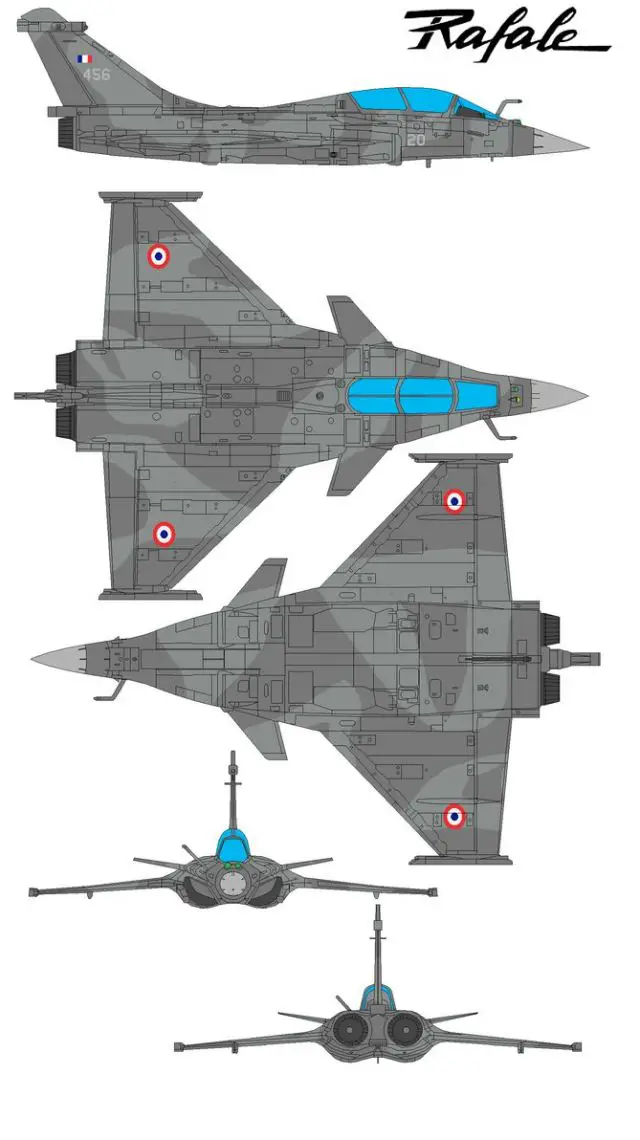 |
||||||||||||||||||||||
|
||||||||||||||||||||||
Rafale B C M Dassault fighter aircraft technical data sheet specifications intelligence description information identification pictures photos images video France French Air Force defence industry technology
- Posted On

